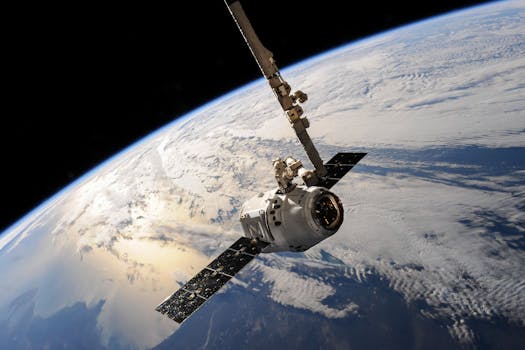MEO Satellites: Revolutionizing Global Communication with Medium Earth Orbit Technology – MEO Satellites

MEO Satellites: Revolutionizing Global Communication with Medium Earth Orbit Technology – MEO Satellites
MEO satellites, or Medium Earth Orbit satellites, are a type of satellite that operates in an orbit between 2,000 and 36,000 kilometers above the Earth’s surface. This orbit is higher than Low Earth Orbit (LEO) satellites but lower than Geostationary Orbit (GEO) satellites. MEO satellites are designed to provide a balance between the benefits of LEO and GEO satellites, offering faster and more reliable connections for global communication.
MEO satellites have several advantages over traditional GEO satellites. They have a lower latency, which means that the time it takes for a signal to travel from the Earth to the satellite and back is reduced. This makes MEO satellites ideal for applications that require real-time communication, such as video conferencing and online gaming. Additionally, MEO satellites have a wider coverage area than LEO satellites, making them suitable for providing broadband services to remote and underserved areas.
History and Development of MEO Satellites
The concept of MEO satellites has been around for several decades, but it wasn’t until the 1990s that the first MEO satellite was launched. The initial MEO satellites were used for navigation and communication purposes, but they were not as advanced as the ones we have today. In recent years, there has been a resurgence of interest in MEO satellites, driven by the growing demand for global connectivity and the need for faster and more reliable communication services.
Several companies, including O3b Networks, SES, and Intelsat, have launched MEO satellite constellations in recent years. These constellations are designed to provide high-speed broadband services to areas that are not currently served by traditional fiber-optic cables. The use of MEO satellites has also been explored for other applications, such as Earth observation, weather forecasting, and satellite-based augmentation systems.
Applications and Benefits of MEO Satellites
MEO satellites have a wide range of applications, including broadband services, mobile connectivity, and IoT (Internet of Things) connectivity. They are particularly useful for providing connectivity to remote and underserved areas, where traditional fiber-optic cables may not be available. MEO satellites can also be used to provide backup connectivity in case of natural disasters or network outages.
The benefits of MEO satellites include faster and more reliable connections, lower latency, and wider coverage areas. They are also more secure than traditional GEO satellites, as they are less vulnerable to jamming and interference. Additionally, MEO satellites can provide more precise location-based services, making them suitable for applications such as navigation and tracking.
Challenges and Future Developments
Despite the many benefits of MEO satellites, there are still several challenges that need to be addressed. One of the main challenges is the high cost of launching and operating MEO satellites. Additionally, there are regulatory issues that need to be resolved, such as the allocation of spectrum and the establishment of standards for MEO satellite operations.
As the demand for global connectivity continues to grow, we can expect to see further developments in MEO satellite technology. The launch of new MEO satellite constellations, such as the upcoming O3b mPOWER system, will provide even faster and more reliable connections. Additionally, the use of advanced technologies, such as beamforming and phased arrays, will enable MEO satellites to provide more precise and targeted connectivity services.




